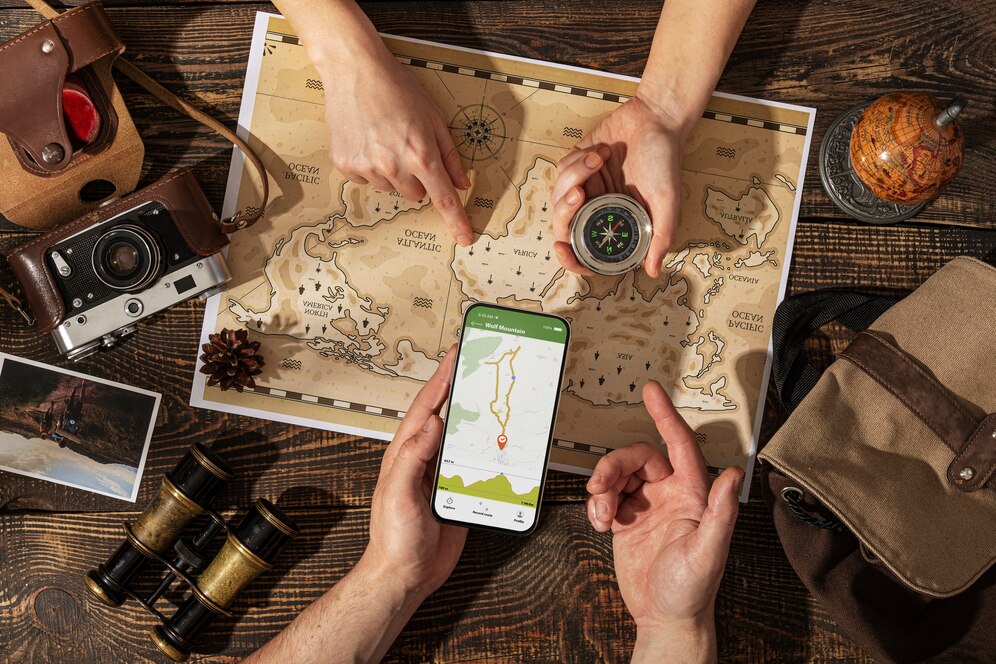Mobile-GIS as a Solution for the Archaeological Survey – Evaluating QField Field Survey in Syria (‘Āṣūr and Bjam‘āsh)
Keywords:
Archaeological survey, Mobile-GIS, GIS, GIS Collector, QField, Fieldwork, ‘Āṣūr, Bjam‘āshAbstract
QField is a mobile version of the desktop GIS program QGIS, customized for the Android platform. The expansion in the use of mobile devices that support the Global Positioning System (GPS) and data collection applications has led to the reliance on the digital recording mechanism, including the use of mobile GIS applications, as it provides broad access to visualization and recording tools, which makes decision-making and interpretation in the field more coordinated and comprehensive through the team. That allows applications to synchronize GIS-based fieldwork between the computer and the phone or tablet. Mobile-GIS eliminates the separation between data capture and a GIS.
References
[1] Alighieri, L. (n d). Archaeology and GIS - Maps, Apps, and the Geoweb. King’s College. London.
[2] Ekstedt. G. & Endoff. T. (2012). Design and Development of a Mobile GIS Application for Municipal Field Work. Lund University.
[3] Eleiche. M.A. (2011). Network Analysis. Methods for Mobile GIS. Hungary.
[4] Fazal. SH. (2008). GIS basics. India.
[5] Hadjimitsis. D.G. et al. (2013). Remote Sensing for Archaeological Applications: Management, Documentation and Monitoring. Remote Sensing of Environment. Cyprus University of Technology. Cyprus. Pp 57-95.
[6] Lindsay. I & Kong. N.N. (2020). Using the ArcGIS Collector Mobile App for Settlement Survey Data Collection in Armenia. Advances in Archaeological Practice 8:4. Pp 322–336.
[7] Major. B. (2007). The Rural Site of ÝÀÒÙr. Archaeology and the Crusades. Greece. Pp 157-171.
[8] Major. B. (2015). Medieval Rural Settlements in The Syrian Coastal Region. Oxford.
[9] Mohammad. W. (2008). AsÁsiyyÁt nuÛÙm al-maÝlÙmÁt al-jughrÁfiyyah.
[10] Montagnetti. R & Guarino. G. (2021). From QGIS to QField and Vice Versa: How the New Android Application Is Facilitating the Work of the Archaeologist in the Field. Environmental Sciences Proceedings. 10:6. Italy.
[11] Scianna. A. & B. Villa. (2011). GIS applications in archaeology. Archeologia e Calcolatori. 22. Pp 337-363.
[12] Tokmakidis, K. et al. (2004). Geographic Information System Applied in Archaeological Site. Workshop – Archaeological Surveys. WSA3 Spatial Information Systems for Archaeology. Athens.
[13] Verhagen. Ph. (2018). Spatial analysis in archaeology: Moving into new territories. Digital Geoarchaeology. Natural Science in Archaeology. Amsterdam. Pp 11-25.

Downloads
Published
How to Cite
Issue
Section
Categories
License
Copyright (c) 2025 Ghinwa Saba

This work is licensed under a Creative Commons Attribution 4.0 International License.
All Articles in 'International Research Journal of Scientific Studies' are Open Access articles published under the Creative Commons CC BY License Creative Commons Attribution 4.0 International License http://creativecommons.org/licenses/by/4.0/.
This license allows you to share – copy and redistribute the material in any medium or format. Adapt – remix, transform, and build upon the material for any purpose, even commercially.

